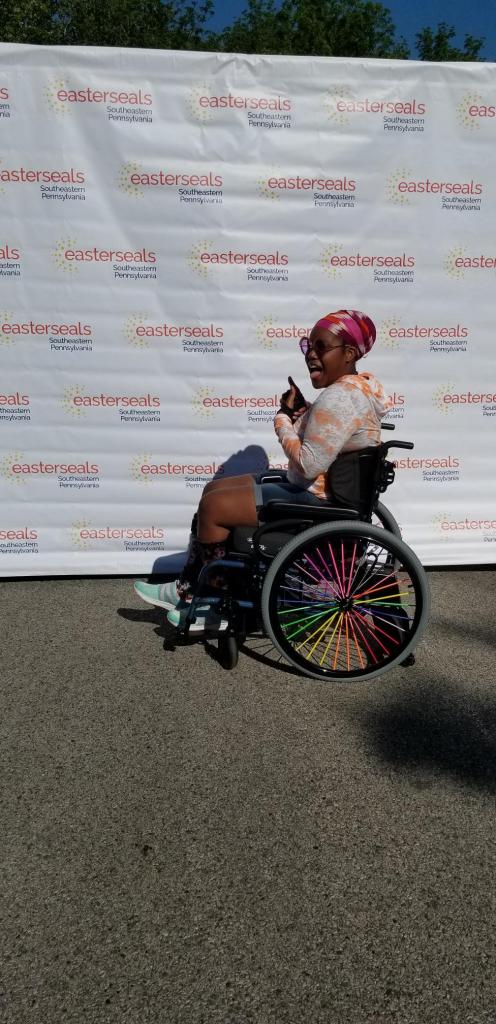
Position Paper on Early Intervention
December, 2004
Definition of Issue
Although Early Intervention includes children from birth through age five, this position paper only focuses on children from birth through two. The three to five year old program is administered differently.
Funding for early intervention comes from federal, state and county sources. Beginning with the Department of Education, funds flow to Pennsylvania’s Department of Public Welfare, and into their Mental Health/Mental Retardation program. MH/MR then supplies funds to counties in Pennsylvania, who administer the program, adding some percentage of county funding to the mix. The typical arrangement is for county MH/MR departments to contract with a network of service providers, with MH/MR personnel providing case management while the actual services are supplied by independent providers. These independent providers negotiate fees for service directly with the county; the county provides the referrals, approves and monitors utilization, and determines the funding source. Funding sources include base funding, waiver funding and MA. The counties pay the providers directly for base and waiver funded consumers; providers bill MA directly.
EI used to be a center based program, so that children were seen in classroom settings. Several years ago, it became mandated that children be seen in their natural environment. Typically, for infants and toddlers, this is their home, a day care center, or at the home of a relative or caretaker. Thus service providers travel from one child to another throughout the state, loosely averaging about ? hour travel per one hour direct service time. In some areas of the state this is more due to urban traffic conditions and low density in the rural areas.
Providers comply with the State’s 4300 regulations, which determine allowable costs to provide EI both direct and indirect and allow providers to retain up to 3% above their costs. There is no stop gap on the other side, so that provider losses are not limited.
The Problem
Travel for EI is not handled consistently among the counties. Some counties pay travel rates across the board, at the full allowable rate. Other counties pay no travel at all. Still more pay a reduced amount for travel, an amount that may vary among providers contracting with the same county. In some instances, counties don’t pay travel but once a year they pay a lump sum payment to providers to cover all unreimbursed costs. Travel is covered by base dollars so counties have an incentive to manage these costs as tightly as possible. It costs providers more for therapists to travel than it does for them to provide direct service, due to the additional cost of mileage reimbursement. Therefore, providers strive to receive a fair reimbursement for all costs while the counties strive to manage this large expense. Because these goals are not aligned, a win-win solution has yet to be established.
Proposed Solution
The 4300 regulations prohibit overpaying for EI services revenues in excess of a provider’s allowable costs are returned, with the exception of a 3% retention capability.
A recent study by Young, Oakes, Brown and Company, PC, undertaken for the PA Department of Public Welfare (DPW), concluded that a blended rate should be developed for both travel and direct services. We concur with this suggestion. However, this amount would not effectively be reached by increasing the reimbursement rate by their proposed 3.5%.
The Office of Mental Retardation (OMR) established a work group to make recommendations to DPW. The work group was charged with recommending policy and procedures to ensure Early Intervention rates and travel reimbursements are determined and applied consistently across Pennsylvania. The group was comprised of Provider representatives (both fiscal and program expertise), County representatives (both fiscal and program expertise), DPW representatives including central and regional offices of OMR and the Bureau of Financial Operations, as well as consultants. The work group is in the process of developing its recommendations.
Easter Seals Serving Pennsylvania recommendations:
1. Consider the total cost to provide the service. This is a community based service, which requires providers to travel to each consumer’s home. The cost to providers for staff to travel to appointments is more expensive than the time they are in the consumer’s home in addition to staff salaries, they incur additional expenses for mileage, cell phones, and in some cases laptops, handheld units, etc. (to manage efficiency and communication). Our position is that when the transition to community based services was made in 19xx, these additional costs to provide services were not fully considered.
ESSP concurs with DPW’s intent to eliminate reimbursement for travel. It is too inconsistently applied by funders, and this open ended system doesn’t incentivize providers to manage the amount of travel.
As the largest provider of EI in Pennsylvania, ESSP suggests that their costs to provide the service should be considered in any rate determination exercise. The group has reviewed its costs to provide EI for fiscal year 2004-2005. They found that it costs, on average, $32.02 per therapy unit when all costs, including travel, are included in the cost to provide service. By type of therapy, the cost to provide education is $27.30 per unit, Occupational Therapy $32.72, Physical Therapy $37.10, and Speech Therapy $33.02. This assumes that travel is no more than 2 units, on average, per one hour therapy session.
ESSP proposes that this process be repeated for other large providers across the state to further refine the averages. This information should help determine the cap rate for services.
2. Maintain current level of funding for travel reimbursement where it exists until the work group has completed its task. We suggest that county funders wait until OMR makes an official determination about rates.







 ) He was confused as to why Autumn used to be able to walk and can’t now. Autumn explained to him that she can still walk. She told him that it’s like his muscles are very tight (he has CP) and hers are too loose). She told him she must wear the mafos for short distances and use the wheelchair for longer outings. Autumn, Mung and I met up at the Franklin Institute for the Harry Potter Exhibit. It was Autumn’s first trip taking her wheelchair in an Uber. (She got enough good advice to pick one that would be easily portable when needed). Our reunion was as fun as ever.
) He was confused as to why Autumn used to be able to walk and can’t now. Autumn explained to him that she can still walk. She told him that it’s like his muscles are very tight (he has CP) and hers are too loose). She told him she must wear the mafos for short distances and use the wheelchair for longer outings. Autumn, Mung and I met up at the Franklin Institute for the Harry Potter Exhibit. It was Autumn’s first trip taking her wheelchair in an Uber. (She got enough good advice to pick one that would be easily portable when needed). Our reunion was as fun as ever. 



















